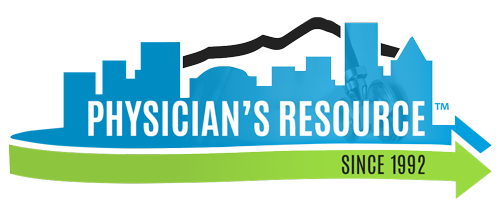All About Infectious Disease Control
People who work in the healthcare sector are often exposed to a wide range of infectious agents, from TB and MRSA to influenza and COVID-19. This is true whether they have face-to-face interactions with patients or perform ancillary tasks in a laboratory and other similar settings.
So if you run a medical, dental, or even veterinary practice, you cannot focus solely on providing high-quality patient care. You should also pay attention to the safety of your staff from exposure risks, whatever type of work they perform.
That said, diversity in the workplace settings of healthcare workers makes it more difficult to create and implement the necessary safety measures. The good thing is that you are not on your own, as OSHA is with you in every step of your safety journey.
Regulations
OSHA, or Occupational Safety and Health Administration, is a large regulatory agency tasked to ensure that workers have access to “safe and healthful working conditions.” It has clear and actionable standards that business owners and medical practitioners have to comply with to protect their staff.
When it comes to the transmission of infectious agents, OSHA has a number of directives designed to help reduce the risks for occupational exposure. Here’s a close look at some of them.
Standard for Bloodborne Pathogens
In the context of workplace safety, the term “bloodborne pathogens” applies to microscopic organisms that can be found in human blood and have the potential to cause diseases upon exposure.
There are three major ways that these pathogens can spread:
- Direct contact, where infected blood enters the body of a health worker
- Indirect contact, like when an object contaminated with infected blood touches the skin of the health worker
- Respiratory droplet transmission, where the health worker inhales droplets expelled via cough or sneeze
Exposure to bloodborne pathogens comes with a long list of possible diseases, but the biggest risks are hepatitis B and HIV. To protect your employees, you must comply with the following OSHA requirements.
1. Establish and Implement an Exposure Control Plan
The first step in protecting your employees from infectious diseases is to have a robust exposure control plan in place. This system should include a list of job classifications that are vulnerable to exposure and outline the steps they need to take in case they do get exposed to bloodborne pathogens.
2. Observe Universal Precautions
Universal Precautions is an approach to infection control where you and your workers handle human blood and other body fluids with extreme care as if they are infected with HIV, hepatitis B, and other diseases.
3. Engineering Controls and PPE
Employers must identify, evaluate, and administer effective engineering controls and work practices to isolate or remove bloodborne pathogens, such as containers for the disposal of needles and other sharp instruments, using self-sheathing needles, or implementing a needleless system in the workplace.
If there are risks that cannot be removed by these measures, make sure that your staff has access to the appropriate PPE.
4. Hepatitis B Vaccination and Post-Exposure Evaluation
OSHA states further that employers are supposed to make hepatitis vaccinations available to their employees at no cost to them. Also, in case of exposure, the employer should provide the necessary laboratory tests to the employee for free.
Standards for Personal Protective Equipment
Aside from ensuring that your staff is wearing PPEs designed specifically for bloodborne pathogens, there are other PPE standards that you need to be aware of so you do not run afoul of OSHA’s safety guidelines.
For instance, gloves, safety glasses, coveralls, full-body suits, and other pieces of equipment must be properly designed, made, and stored. On top of this, the PPEs must fit the wearer properly to ensure they are adequately protected and not dangerously exposed.
Finally, your employees must be trained on how to use the PPEs properly. They must know what to wear and when to wear them. They must also be aware of the limitations of the equipment and use it only as designed.
Standards for Respiratory Protection
Similar to the OSHA standards for bloodborne pathogens, employers are expected to come up with engineering and administrative controls to ensure that breathing air in the workplace is free from droplets and infectious agents that are airborne. Some of the common examples are general or local ventilation, enclosure of the affected work area, or using less toxic materials.
Additionally, if this approach does not eliminate all the issues, employees must have access to the appropriate respirators depending on the risks present in the workplace.
Consulting and Training Services
OSHA’s guidelines for controlling infectious diseases in the healthcare sector are comprehensive. It might be a bit much for medical practitioners or business owners like you to manage on your own. The good thing is that there are companies that can help you guarantee the safety of all employees in the workplace.
At Physician’s Resource, we provide OSHA compliance training and consultation to help you keep up with the agency’s constantly-evolving safety standards. We have a team of safety specialists ready to provide on-call advice and support, ensuring that you are audit-ready at all times.
Call us at 1-800-615-1729 to schedule a free consultation with one of our experts today!





Leave a Reply
Want to join the discussion?Feel free to contribute!